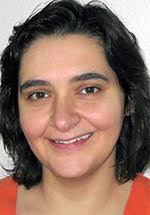
06 Jul Targeting Breast Cancer Screening To Higher Risk Patients Reduces Overdiagnosis, Costs and Side Effects
MedicalResearch.com Interview with:
Dr Nora Pashayan PhD
Clinical Reader in Applied Health Research
University College London
Dept of Applied Health Research
London
MedicalResearch.com: What is the background for this study?
Response: Not all women have the same risk of developing breast cancer and not all women have the same potential to benefit from screening.
If the screening programme takes into account the individual variation in risk, then evidence from different studies indicate that this could improve the efficiency of the screening programme. However, questions remain on what is the best risk-stratified screening strategy, does risk-stratified screening add value for money, and what are benefit and harm trade-offs.
MedicalResearch.com: What are the main findings?
Response: Not screening women at lower risk could improve both the cost-effectiveness and the benefit-to-harm ratio of the breast screening programme.
The extent of these improvements depended on the risk threshold we used to define the higher risk group i.e. to those screening to be targeted.
The lower the risk threshold, i.e. the larger the proportion of women offered screening, the cost of the screening programme would be higher. On the other hand, the gain in quality adjusted life years (QALYs) would increase up to a point and then reach a plateau. That is the more we screen the lower risk women, the cost of the screening programme increases without gaining in QALYs. QALYs are summary measure of health outcomes.
Similarly, with the lower the risk threshold, there would be larger number of women with overdiagnoses but also larger number of breast cancer deaths prevented. However, the extent of increase in overdiagnosis is much more than the drop in breast cancer deaths.
If screening is targeted to 30% of women at highest risk, there could be 71% less overdiagnoses, 10% less breast cancer deaths avoided and cost £538,000 less. If the risk threshold is lowered such that screening is targeted to 70% of at highest risk, there could be 27% less overdiagnoses, 3% less breast cancer deaths avoided and cost £20,000 less.
MedicalResearch.com: What should readers take away from your report?
Response: There are over 300 known genetic variants associated with breast cancer. Genotype analysis would identify low risk women and allow more targeted screening, increasing value for money of the screening programme and reducing overdiagnosis.
MedicalResearch.com: What recommendations do you have for future research as a result of this work?
Response: So far we have evidence from modelling study on the cost-effectiveness and benefit-to-harm ratio of risk-targeted screening strategy. Next we need consensus of the service providers and service users on what’s the optimal risk threshold to define the low risk group, who won’t be offered screening.
We would need research evidence on how best to implement a risk-stratified screening programme that is acceptable by the users and the providers and it is feasible to provide high quality programme which is accessible to all.
Further step would be evaluating the optimal screening strategy in health service randomized trial i.e. implement and evaluate in the routine setting.
Disclosures: Funding support from Cancer Research UK programme grant
Citation:
[wysija_form id=”3″]
The information on MedicalResearch.com is provided for educational purposes only, and is in no way intended to diagnose, cure, or treat any medical or other condition. Always seek the advice of your physician or other qualified health and ask your doctor any questions you may have regarding a medical condition. In addition to all other limitations and disclaimers in this agreement, service provider and its third party providers disclaim any liability or loss in connection with the content provided on this website.
Last Updated on July 6, 2018 by Marie Benz MD FAAD
